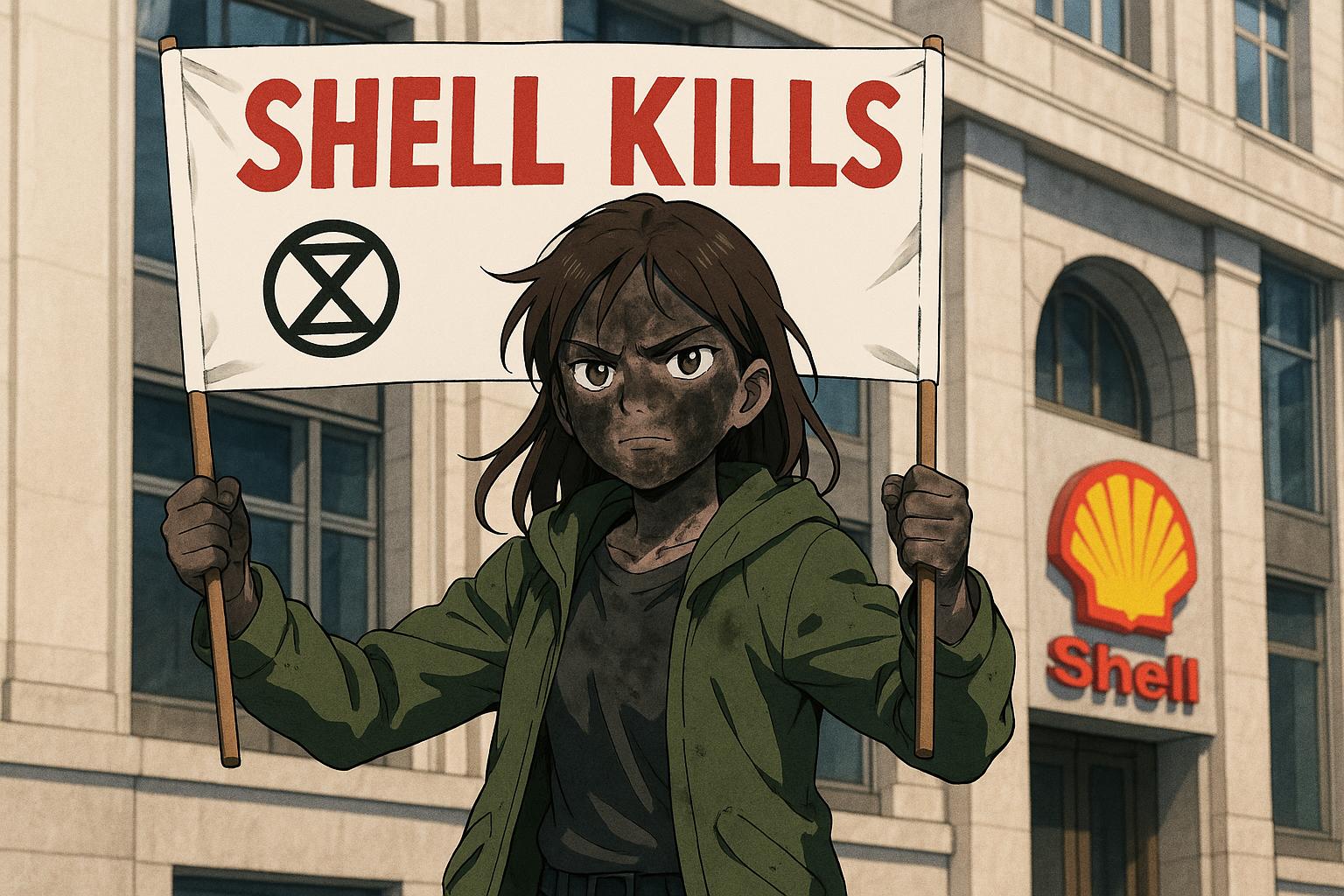In a striking demonstration of environmental activism, members of Extinction Rebellion gathered outside the headquarters of Shell in London, where the oil giant was holding its annual general meeting. Protesters aimed to spotlight the urgent need for action against climate change, donning an oil-like substance on their faces—a symbolic representation of the pollution they attribute to the fossil fuel industry. The demonstration coincided with a week of international protests demanding governmental declarations of a climate emergency.
Echoing a broader movement, the protesters, numbering in the thousands, disrupted key locations across central London, including Parliament Square and Oxford Circus. Many activists resorted to non-violent civil disobedience, a hallmark of Extinction Rebellion's strategy. Organisers intended to maintain their presence for days, reflecting a commitment to sustaining pressure on both corporate and governmental entities. At Marble Arch, one of the city's busiest intersections, banners and flags unfurled as speakers rallied the crowd.
In a bold act of defiance, some activists vandalised Shell's headquarters, daubing the slogan "Shell kills" on its walls, while others glued themselves to windows and shattered glass in the building’s revolving doors. The group's tactic of drawing attention to what they term “ecocide” stems from their belief that major fossil fuel companies like Shell are not only contributing to environmental degradation but are actively obstructing necessary climate action. In a statement, they claimed that their actions aimed to provoke legal scrutiny and galvanise public debate on the issue.
The police responded to the escalating protests with a significant presence, resulting in a handful of arrests. While initially apprehensive, the authorities did not escalate their involvement to a level seen during past protests, such as those in November, where extensive occupations of central London bridges led to numerous detentions. This more restrained approach appears to reflect an evolving dynamic between law enforcement and climate activism.
Activists have underscored the urgency of their cause, with one protester articulating, “If we don’t do anything to change this, our children will die.” This sentiment encapsulates the desperation felt by many concerned citizens, particularly in light of recent scientific reports that signal worsening climate scenarios. The protests serve not only as a call to action but also as a reminder of the growing discontent among youths regarding inaction on climate policies.
Moreover, the backdrop of such protests is an evolving political landscape in the UK, where climate policy has increasingly entered public discourse. The government's response to these demonstrations carries significant weight, as activists consistently demand a transformative shift in policies that prioritise environmental sustainability over fossil fuel dependency.
As the week of protests unfolds, the attention of both the public and the media is firmly on the activists' demands for accountability and sustainable change. Their resolute stand, amidst significant societal division on the issue of climate change, underscores the urgency of the activists' message and the broader implications for governance and industry in the climate crisis.
The protesters' determination to disrupt the status quo reflects a growing global movement, as cities around the world grapple with the consequences of climate inaction. As Extinction Rebellion continues its campaign, it remains to be seen how effective their methods will be in influencing policy and public opinion in the long term.
Reference Map
- Paragraph 1: 1, 3
- Paragraph 2: 3, 4
- Paragraph 3: 3, 5
- Paragraph 4: 4, 5
- Paragraph 5: 3, 4
- Paragraph 6: 4, 5
- Paragraph 7: 4, 6
- Paragraph 8: 6, 7
- Paragraph 9: 4, 5
- Paragraph 10: 3, 4
Source: Noah Wire Services
